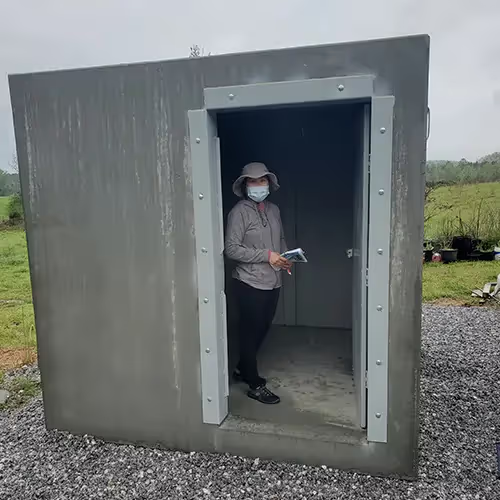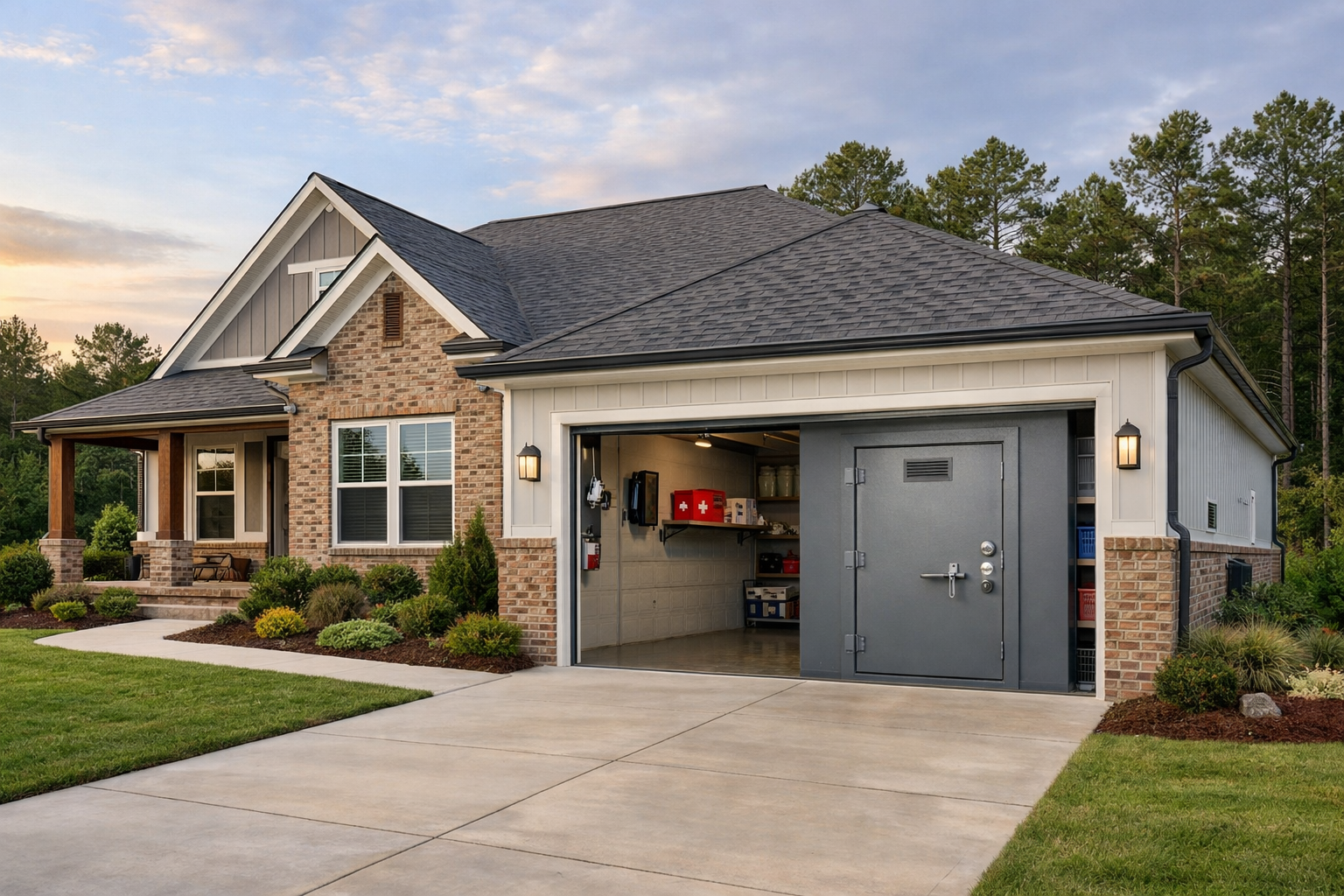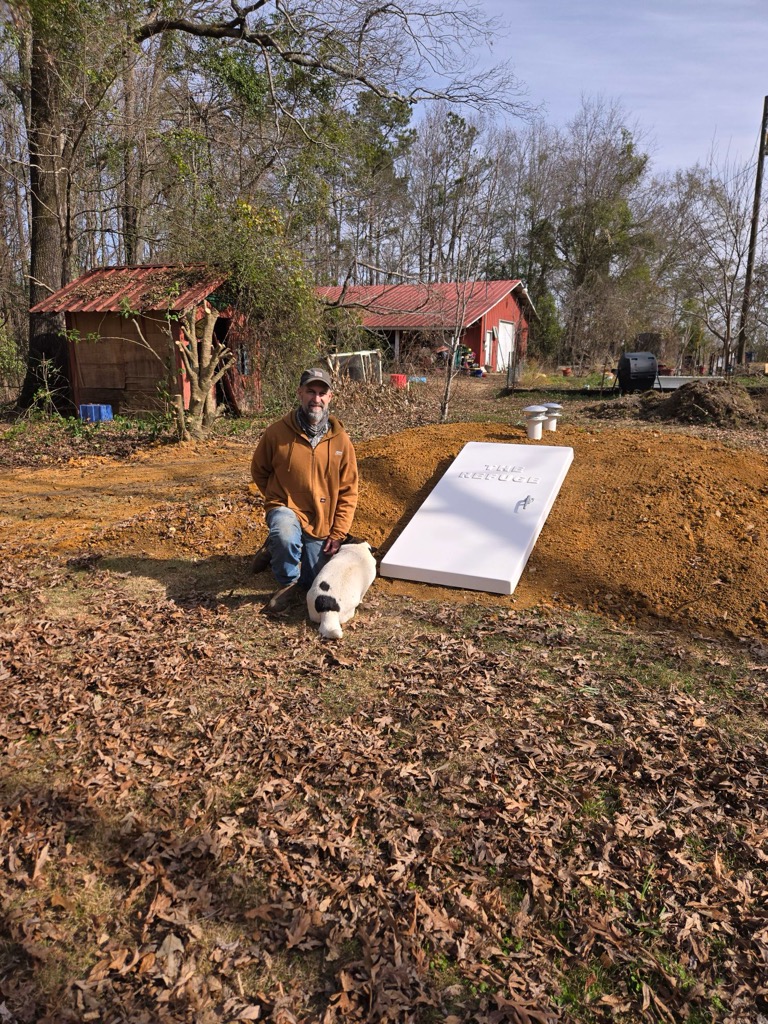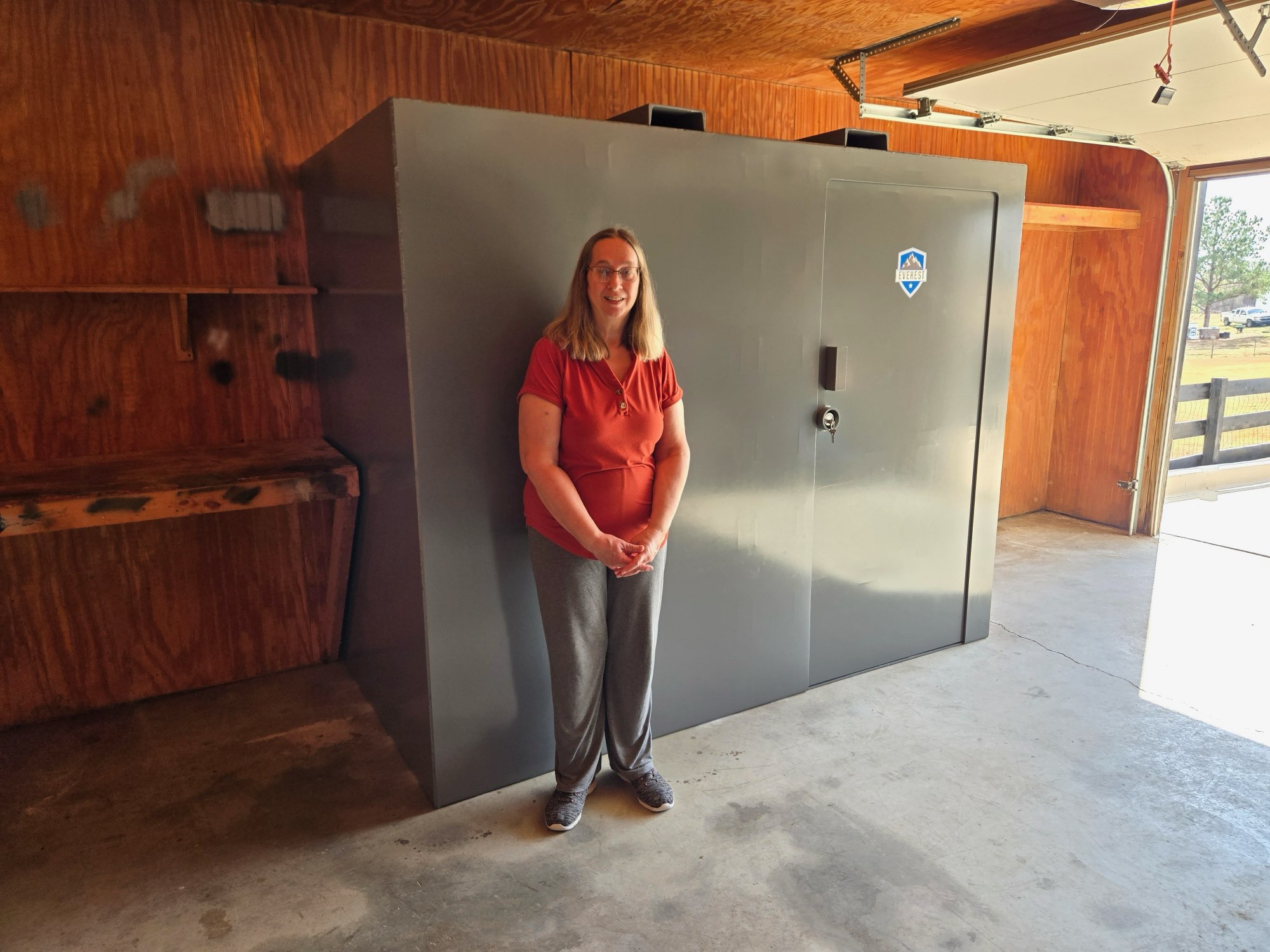A Beginner’s Blueprint: Planning and Installing Your Ideal Storm Shelter in Alabama


Have you ever found yourself anxiously watching the weather, wondering if your home could really protect you in a severe weather event? If you live in Alabama, where tornadoes and violent storms are all too common, that question isn’t just hypothetical—it’s personal. And if you’ve felt even a twinge of worry, you’re definitely not alone.
That’s where storm shelters come in. This blog is your friendly, step-by-step guide to planning and installing a storm shelter that fits your home, your budget, and—most importantly—your peace of mind. Whether you're just curious or ready to start digging, we’re here to make the process feel less overwhelming and way more doable.
Investing in a storm shelter isn’t just about adding a structure—it’s about creating a safe haven for your family when the unthinkable happens. The right preparation can make all the difference when minutes matter most during a tornado warning or other severe weather alerts. So it’s worth getting it right from the start.
In this guide, you’ll learn everything from choosing the right type of residential storm shelters to understanding Alabama's specific regulations, plus tips for installation, maintenance, and expert-approved best practices. Let’s make your home safer—one smart decision at a time.
Understanding the Need: Why Storm Shelters Matter in Alabama
Storm shelters have come a long way from the cramped root cellars of the past. In Alabama—a state that ranks among the most tornado-prone in the country—tornado shelters have evolved from basic survival spaces into carefully engineered, FEMA-compliant safe rooms. The need for durable, accessible underground shelters began rising in the 1950s and 60s as tornado-related fatalities drew public concern. Since then, technology and building standards have dramatically improved.
So, what exactly is a storm shelter? In simple terms, it's a fortified structure specifically designed to withstand extreme weather conditions like tornadoes, hurricanes, or even debris-heavy storms. You might hear them called safe rooms, tornado shelters, or below ground shelters, but the goal is the same: protection when things get dangerous fast. They can be above ground or below, built inside your home or outside of it.
Today, with growing awareness of climate volatility, more Alabama homeowners and businesses are exploring storm shelter options. State and federal grant programs, advances in shelter materials such as reinforced concrete, and updated local codes have made installation more affordable and effective than ever before. Whether you live in a rural area or a busy city, shelter planning is now a mainstream consideration for home safety.
This foundation sets the stage for everything we’ll cover ahead—from choosing the right type to making sure it meets Alabama's safety codes. Let’s dive into the essentials and make sure you're starting with a clear understanding.
Choosing the Right Type of Storm Shelter for Your Home
Let’s talk about your options. Picking the right storm shelter depends on your space, your needs, and your budget. Don’t worry—it’s not as intimidating as it sounds once you break it down.
Here are the most common types of storm shelters in Alabama:
In-Ground Shelters
These are underground shelters buried below the surface, offering maximum protection, especially from flying debris during tornadoes or severe storms. Think backyard bunkers or below-ground shelters installed near the basement or under the garage floor.
Above-Ground Safe Rooms
These are reinforced steel or concrete rooms built into a home or garage. They’re easier to access for people with mobility issues and surprisingly sturdy, making them a great option for above-ground storm shelters that need to be ADA-compliant.
Community Shelters
Often found in neighborhoods or trailer parks, these shared spaces are built to protect multiple households during emergency evacuations. They are usually located by the local emergency management office or coordinated through the emergency management agency.
Prefabricated Shelters
Delivered and installed as standalone units, often in your yard or garage, these shelters come in many sizes and materials like steel or concrete. They’re a popular choice for customers looking for quick installation and effective protection.
Examples:
- You live in a house with a two-car garage and an elderly parent. An above-ground safe room inside the garage might be ideal—it’s quick to enter, ADA-compliant, and doesn’t require stairs or digging.
- You’re building on rural land with no immediate neighbors. A pre-cast in-ground shelter near your back porch could be perfect—tough, private, and out of the way until needed.
Understanding these differences helps you make a confident choice. And once you know what fits your home and lifestyle, the rest of the process becomes much easier.
The Benefits of Installing a Storm Shelter in Alabama
So why go through the time and effort of installing a storm shelter? In short: peace of mind, safety, and long-term value. Here are five key benefits every Alabama homeowner should consider when planning for severe weather and emergency situations.
Life-Saving Protection
During a tornado warning or any severe weather event, having a sturdy building like a storm shelter can save lives. These structures are designed to protect your family from flying debris, high winds, and even building collapse during tornadoes or similar disasters in Alabama.
Increased Property Value
Installing a FEMA-certified storm shelter adds long-term value to your home. In areas prone to severe weather, including Alabama, homes with residential storm shelters are often more attractive to customers seeking both safety and smart upgrades for resale and investment purposes.
Emergency Preparedness
With a shelter in place, you're always ready to take shelter without delay. No panicked searches during a tornado warning—just a plan. Guidance from your local emergency management office and the federal emergency management agency makes preparation easier and more effective.
Potential Insurance Discounts
Many insurance providers recognize the safety benefit of tornado shelters. Homes with certified safe rooms or underground shelter systems may qualify for reduced premiums, making the installation of a storm shelter both a protective measure and a financially smart investment over time.
Accessibility
Above-ground shelters, especially those installed in a garage, can be built to ADA standards. That makes them easy to access for elderly or disabled family members. These shelters are designed with safety, comfort, and quick access in mind for any household configuration.
Real Story: After the 2011 Tuscaloosa-Birmingham tornado outbreak, a homeowner in rural Alabama installed an above-ground shelter in their garage. During another storm two years later, their family of five, including a grandparent with limited mobility, took shelter immediately inside. The unit not only kept them safe—it gave them peace of mind they say they’d never felt before.
Challenges to Consider When Planning a Storm Shelter
Let’s be real—no solution is perfect. Planning and installing a storm shelter can come with some hurdles. But don’t let that stop you. Knowing what to expect helps you move forward with confidence.
Common Challenges:
- Cost: Depending on the type and size, shelters can cost anywhere from $3,000 to $10,000 or more.
- Installation logistics: Below ground shelters may require excavation, concrete cutting, or permits.
- Space limitations: Small homes or lots may not have the room for certain shelter types.
- Maintenance: Like any structure, shelters need occasional inspections and repairs to maintain safety.
Overcoming Barriers:
- Explore grant programs through FEMA or your local emergency management office.
- Work with certified installers experienced in reinforced concrete construction.
- Consider prefabricated shelters for easier, less intrusive installation.
- Plan during home renovations to integrate shelters smoothly.
How to Plan and Install Your Storm Shelter Step-by-Step
Ready to get started? Here’s a high-level plan to help you install a storm shelter effectively:
- Assess your needs — Evaluate your location, family size, mobility concerns, and budget to choose a shelter that offers safety and practicality for your specific situation.
- Choose your type — Select from below-ground shelters, above-ground safe rooms, or prefab units depending on your space, home layout, and severe weather risks in your area.
- Check local regulations — Contact your emergency management agency or city offices to verify permitting, safety codes, and placement rules before starting your storm shelter project.
- Apply for grants/rebates — Investigate financial assistance programs from FEMA, Alabama EMA, or your local emergency management office to help reduce your shelter installation cost.
- Hire a certified installer — Use professionals who follow FEMA, ICC, and NSSA standards to ensure your storm shelter is properly constructed and meets all required safety specifications.
- Prepare your site — Clear and level the ground, remove any obstacles, and prepare for excavation or concrete work based on the type of shelter you’ve selected.
- Schedule installation — Set a date with your installer; expect the process to take anywhere from a single day to several days, depending on your chosen shelter model.
- Final inspections — Make sure the shelter passes all required inspections and complies with structural, access, and safety standards before officially marking the project as complete.
- Train your family — Hold practice drills, discuss shelter entry procedures, and stock it with emergency supplies to ensure everyone knows how to respond during severe weather.
Tips for Success:
- Start small and build momentum.
- Get multiple quotes from installers.
- Include your family in emergency planning.
- Celebrate once your shelter is ready—it’s a milestone in safety.
Helpful Resources:
- FEMA P-320 — Guidelines for building safe rooms
- Alabama EMA — Local emergency management resources and grants
- NSSA — Certified shelter manufacturers and standards
- Ready.gov — Emergency preparedness information
Looking Ahead: The Future of Storm Shelters
The world of storm shelters is advancing rapidly. Here are trends to watch:
- Smart shelters with weather alert integration and emergency lighting.
- Modular designs that expand with your family's needs.
- Eco-friendly construction materials with improved insulation.
- Expanded financial assistance through state and federal programs.
These innovations will impact homeowners, builders, communities, and emergency responders—making storm safety more accessible, effective, and inclusive.
Bringing It All Together: Final Thoughts and Next Steps
You’ve just walked through a full blueprint for planning and installing a storm shelter in Alabama—and hopefully, you’re feeling more confident than when you started.
Key takeaways:
- Understand your storm shelter options and how they fit your needs.
- Familiarize yourself with installation, regulations, and permits.
- Tap into grant programs and expert resources.
- Start small; every step toward safety counts.
- Protecting your family is always worth the effort.
Storm shelters aren’t just about weather—they’re about readiness, resilience, and responsibility. They help keep your household safe, calm, and in control during life’s most unpredictable moments.
Ready to take the next step? Look into rebates, browse certified providers, or talk to a local installer. Already have a shelter? Share your story—we’d love to hear how it’s worked for you.
FAQ: Storm Shelters in Alabama
Q1: What types of storm shelters are best for Alabama homes?
A: Both below-ground shelters and above-ground safe rooms are popular in Alabama. Your choice depends on space, budget, and mobility needs. Below-ground shelters offer superior protection from debris, while above-ground shelters are easier to access.
Q2: How do I find shelter locations during a tornado warning?
A: Listen for alerts from your local emergency management office and federal emergency management agency (FEMA). Community shelters and designated safe rooms in public buildings are common locations for emergency shelter.
Q3: Can I get financial help for installing a storm shelter?
A: Yes. Programs like FEMA’s Individual Safe Room Rebate Program and Alabama EMA grants provide funds to help with installation costs for certified shelters.
Q4: What materials are used to construct safe and sturdy storm shelters?
A: Most shelters are made from reinforced concrete, steel, or a combination of durable materials designed to withstand high winds, flying debris, and structural impacts during tornadoes and severe storms.
Q5: How should I prepare my family for a severe weather event?
A: Know your nearest storm shelter or underground shelter location. Practice emergency drills, keep your shelter stocked with supplies, and always shelter immediately when a tornado warning is issued.




